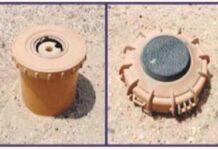If there is a secret in the Arabian peninsula then it has to be Oman. Sharing borders with UAE, Saudi Arabia and Yemen, Oman is distinctively a world of its own, with an embracing society that warmly welcomes visitors, the Omani experience is something that should not be missed.
Oman has so much to offer that one visit may not be enough to see, experience and absorb the incredible attractions, natural beauty, authentic architecture and unique culture, making it among the great destinations that have stood the test of time.

Muscat
The country’s capital, Muscat, is without doubt a breath of fresh air, in the literal sense as well. Situated on the coast and surrounded by arid Hajjar Mountains, there is an instant connection with nature. Muscat offers an absorbing snapshot of the country’s past and present.
Away from the traffic snarl or flashy skyscappers, Oman gives visitors a truly Arabian experience that is steeped in the past yet in total sync with modernity. Luxurious malls and multi lane highways give the modern touch that visitors can see but it is the country’s tradition and heritage that is so fascinating about Muscat.
Muscat is a treasure trove of attractions from museums, mosques, forts, palaces, the opera house, beaches, corniche and souks, the list is endless. So much to discover and experience that whatever one’s taste there is a variety of choices available.

Sultan Qaboos Grand Mosque
The Sultan Qaboos Grand Mosque is an architectural splendor, with its arches, decorations, lights and colors, every corner of the mosque is an absolute architectural gem. Beauty from every angle, the mosque has a magnificent Swaroski crystal chandelier in the center that is strikingly awesome. The engravings on the wall and the single Persian rug, the second largest in the world, which covers the entire mosque floor add to the interior beauty.
Constructed over a period of seven years and opened in 2001, the Mosque however feels like it is almost brand new. Well maintained and impressively organised, the visit to this Omani gem is a must and can leave one completely awestruck with the beauty that is so well harmonised with its natural surroundings of a big garden and different types of plants, trees and flowers.

History in Nizwa
Not to be missed on a visit to Oman is the historic town of Nizwa with its giant fort and high-walled souq. The town lies on a plain surrounded by a thick palm oasis and some of Oman’s highest mountains. Nizwa is the second-biggest tourist destination in Oman. The seat of factional imams until the 1950s, Nizwa, or the ‘Pearl of Islam’ as it is sometimes called, is still a conservative town.
Located in the heart of Oman about 165 km from Muscat and just hour and half drive away on the well-maintained highway, Nizwa is a city steeped in culture and was the capital of Oman in the 6th and 7th centuries AD. The town forms a natural access point for the historic sites of Bahla and Jabrin, and for excursions up the mountain roads to Jebel Akhdar and Jebel Shams.
The Nizwa Fort built in 1668 by Imam Sultan Bin Saif Al Ya’rubi, is among Oman’s most visited national monuments. The fort was the administrative seat of authority for the presiding Imams and Walis in times of peace and conflict. The main bulk of the fort took about 12 years to complete and was built above an underground stream.

The fort is a reminder of the town’s significance through turbulent periods in Oman’s long history. It was a formidable stronghold against raiding forces that desired Nizwa’s abundant natural wealth and its strategic location at the crossroads of vital routes.
Just a 45 minute drive from Nizwa is the Jebel Akhdar or the Green Mountain, part of the Al Hajar Mountains range. It is one of Oman’s most spectacular areas and the highest point Jabal Shams (Mountain of the Sun), which is around 3,000 metres, is not only the highest point in Oman but the whole of eastern Arabia. This area is not only famous for its traditional rose water extraction and agricultural products including pomegranate, apricot, peach and walnut, it also has several important rock art sites, whose oldest figures dating back to 6000 years ago, have been discovered and studied.

Falaj Daris, a world heritage site, is the life maintainer of Nizwa, providing the surrounding countryside with much needed water for the plantations. A short drive away is the Tanuf waterfalls and a little further is Bahla, dominated by a large fort it is a delightful town which has retained its traditional characteristics. Famous for its pottery, most of which is still produced by traditional methods.
















